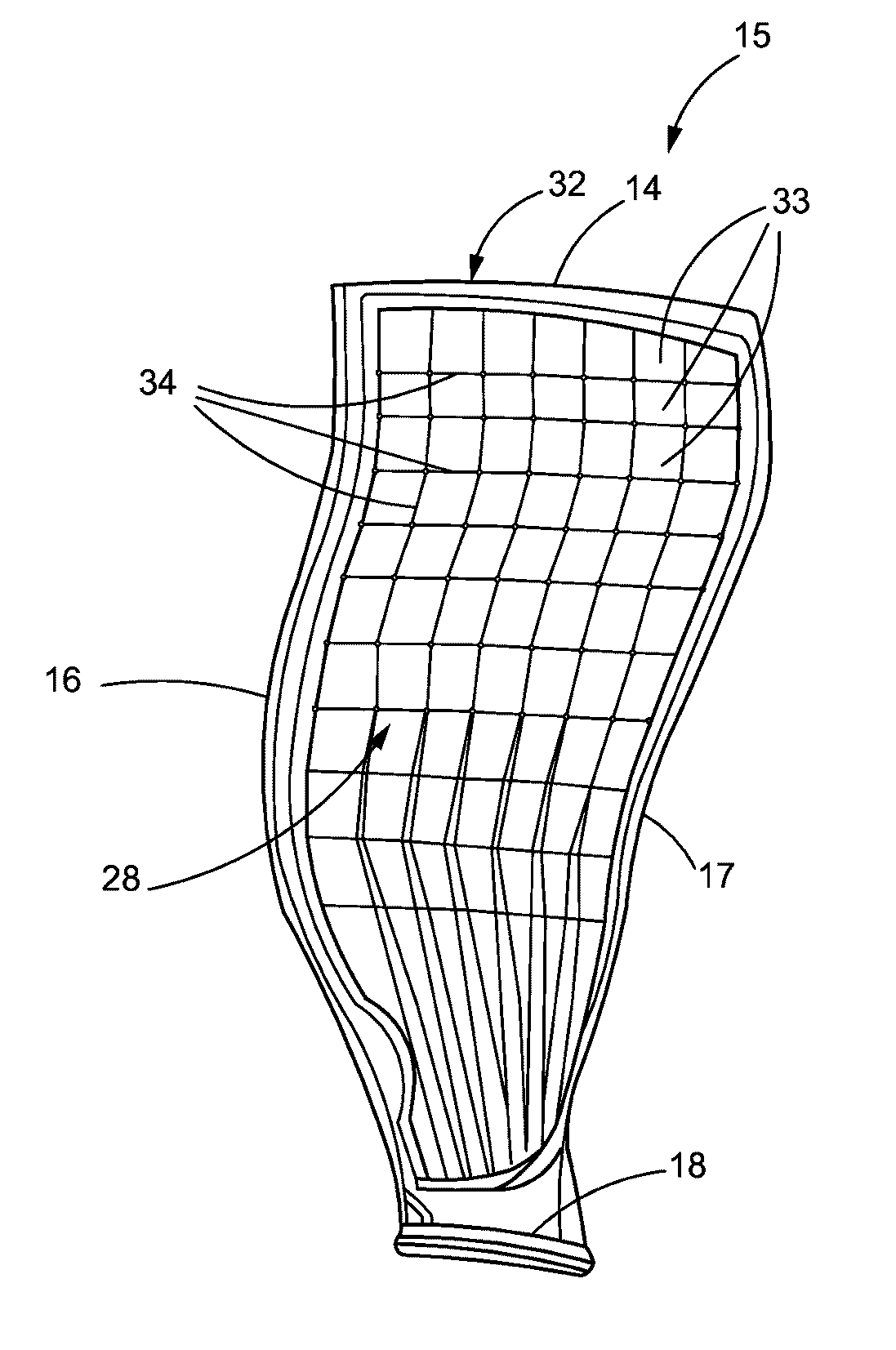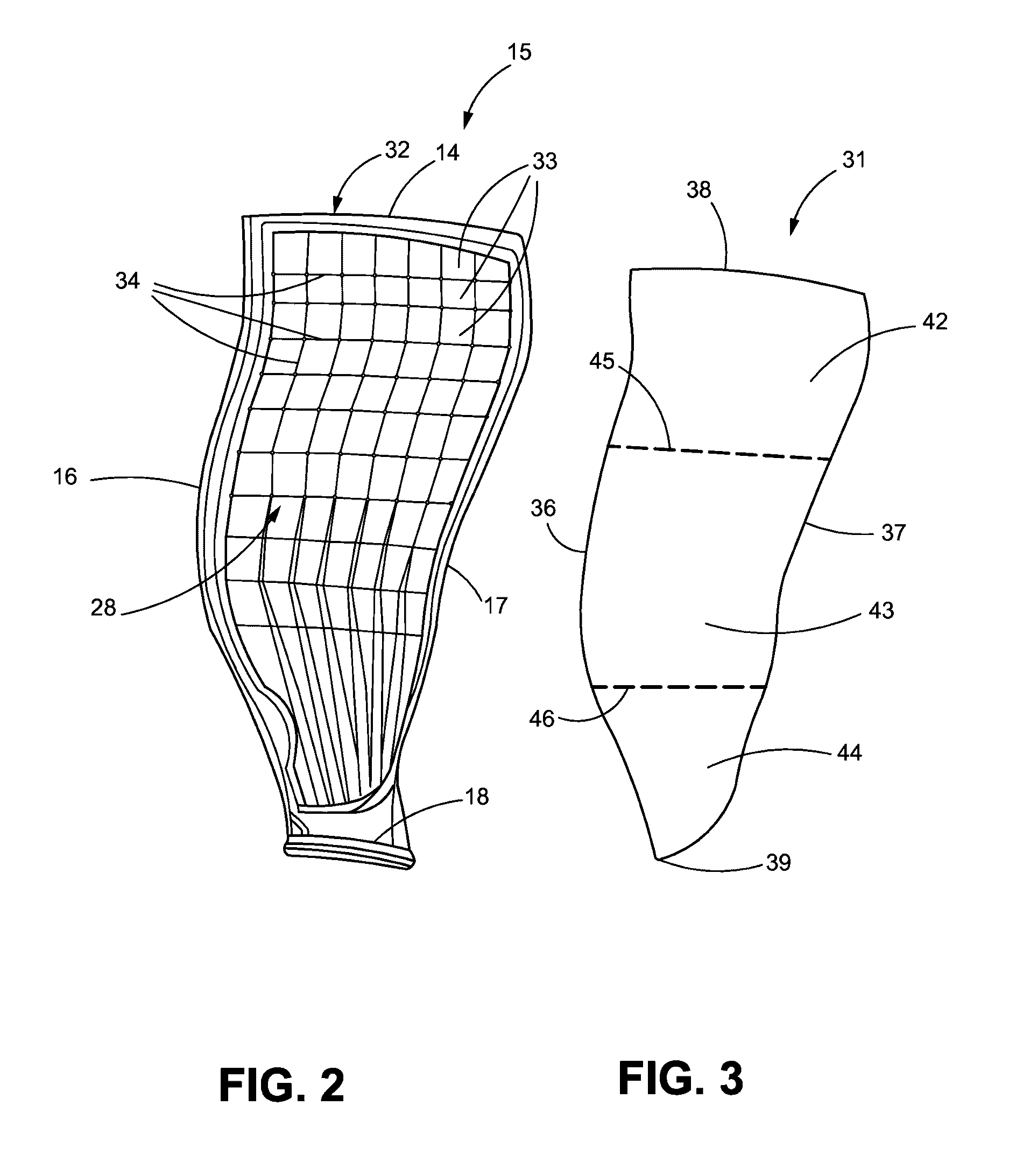Fan blade with segmented fan blade cover
a fan blade and fan blade technology, applied in the field of fan blades, can solve the problems of engine shutdown, engine failure, engine shutdown or lock, and other downstream engine components that may also damage other downstream engine components, so as to minimize the risk of damage to downstream components such as compressors and turbines
- Summary
- Abstract
- Description
- Claims
- Application Information
AI Technical Summary
Benefits of technology
Problems solved by technology
Method used
Image
Examples
Embodiment Construction
[0029]FIG. 1 illustrates part of a turbofan gas turbine engine 10. The engine 10 may include a nacelle 11, which may be lined with a fan case 12 that may include an abradable liner 13 for abuttingly engaging a tip 14 of a fan blade 15 as shown in FIG. 1. The fan blade 15 may include a leading edge 16, a trailing edge 17 and a base or root 18, which may be coupled to the hub 21. The hub 21 may be coupled to the low-pressure shaft 22 via the fan shaft 23 and fan shaft extension 24. Also shown in FIG. 1 is the low-pressure compressor 25, an annular bypass duct 26 and part of the high-pressure compressor 27. Downstream components such as a combustor and high and low-pressure turbines are not shown.
[0030]In addition to leading and trailing edges 16, 17 of the fan blade 15, FIG. 1 also shows the convex or suction side 28 of the fan blade 15, which is illustrated in greater detail in FIG. 2. FIG. 1 further illustrates a cover 31 that is disposed over the suction (or convex) side 28 of the ...
PUM
 Login to View More
Login to View More Abstract
Description
Claims
Application Information
 Login to View More
Login to View More - R&D
- Intellectual Property
- Life Sciences
- Materials
- Tech Scout
- Unparalleled Data Quality
- Higher Quality Content
- 60% Fewer Hallucinations
Browse by: Latest US Patents, China's latest patents, Technical Efficacy Thesaurus, Application Domain, Technology Topic, Popular Technical Reports.
© 2025 PatSnap. All rights reserved.Legal|Privacy policy|Modern Slavery Act Transparency Statement|Sitemap|About US| Contact US: help@patsnap.com



